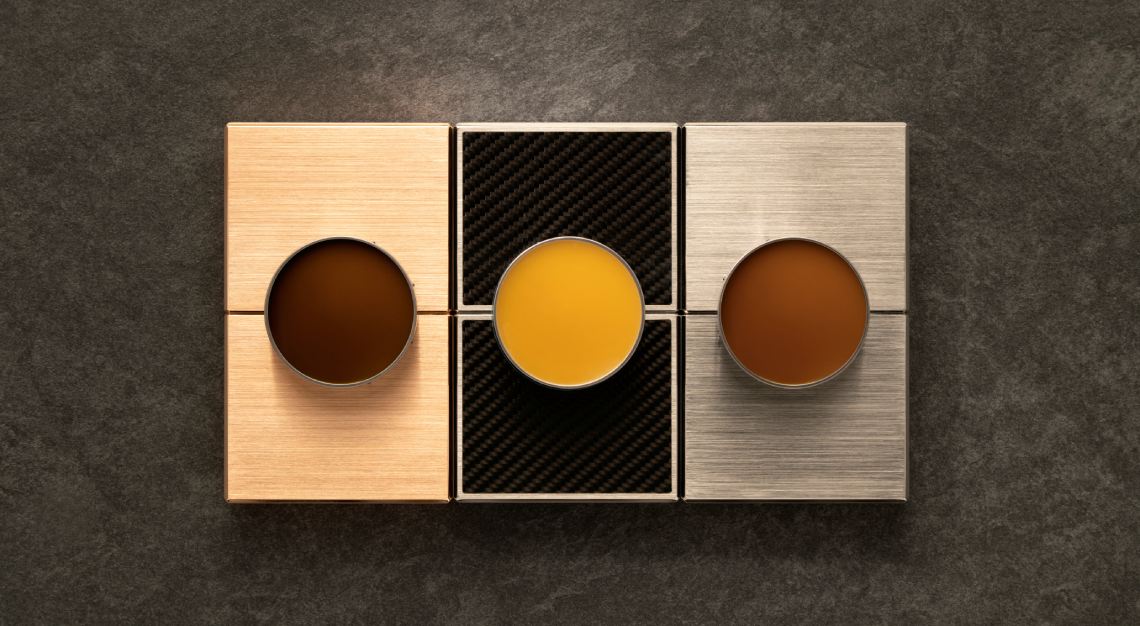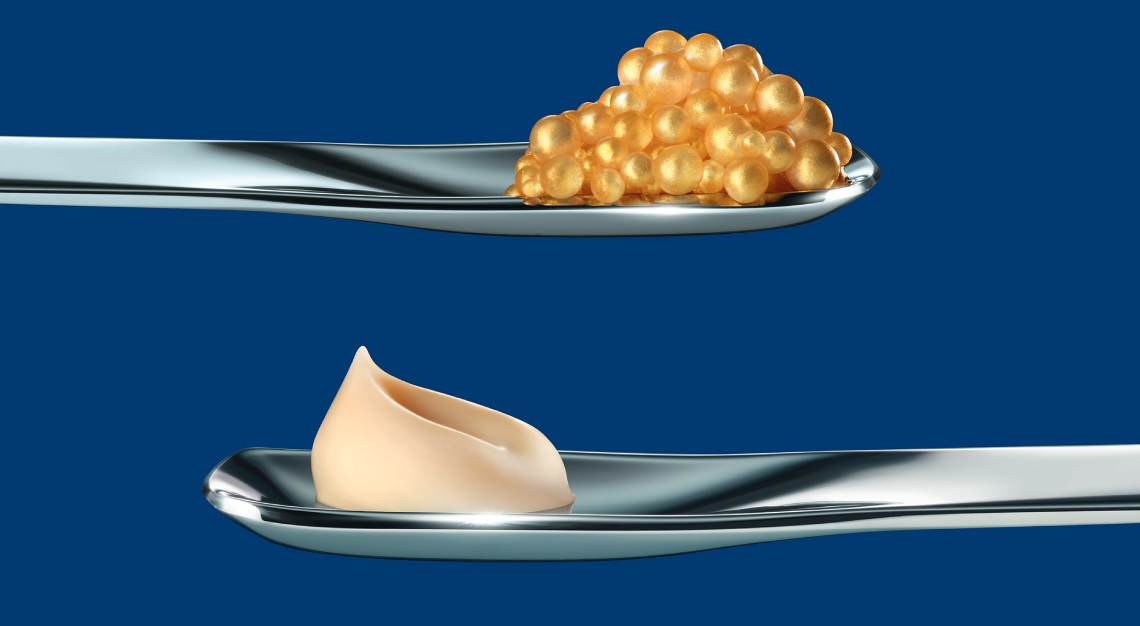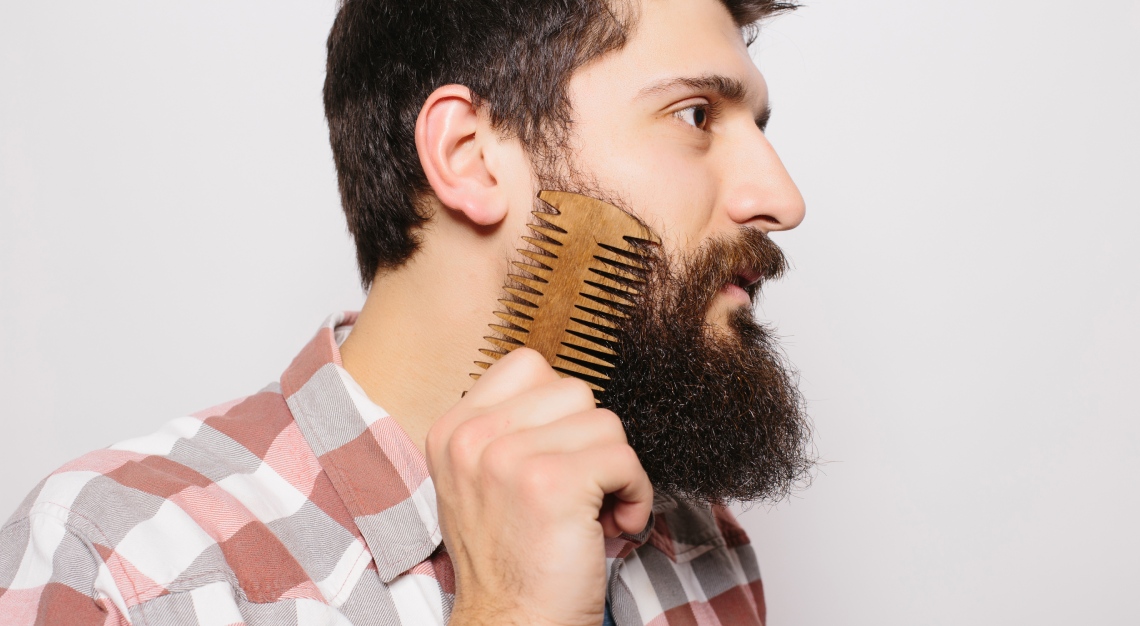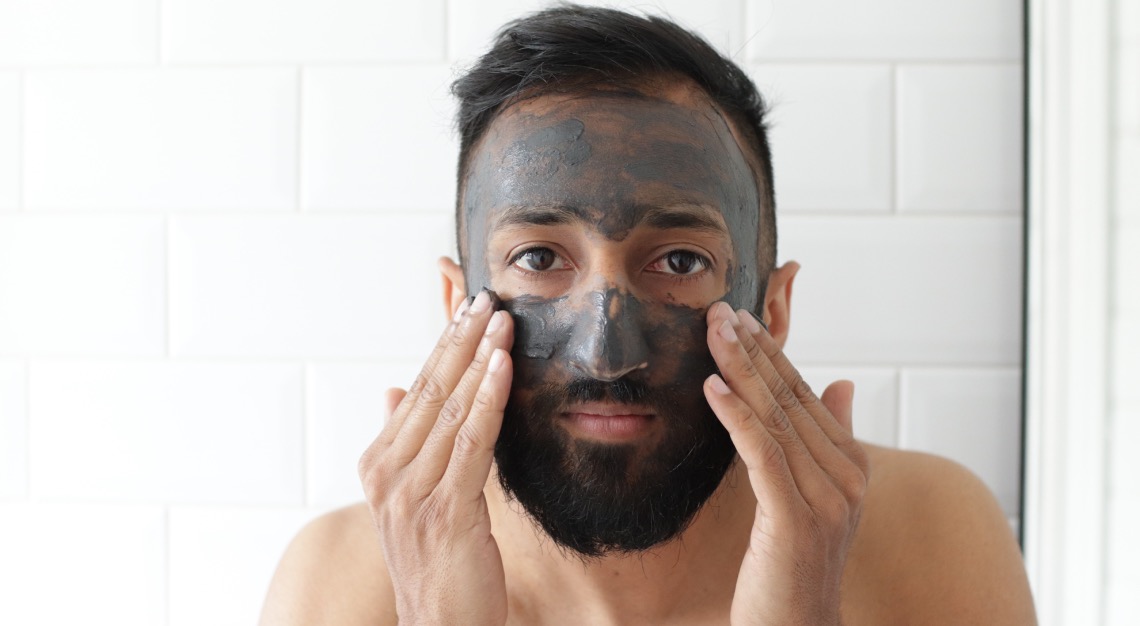A new generation of men is combating hair loss with an old-school idea: the hair piece
While losing a battle with genes and nature atop his scalp, Long Islander Rene Galarza came across the Instagram account of a barber offering very realistic hair pieces. To find such a service closer to home, he did some googling and found Dina Kales, who owns the NYC business Top Shoppe. She told him producing the same results he’d seen on social media wouldn’t be easy or cheap. But after his first appointment, Galarza said he fell in love with the way he looked.
“It was like, ‘Oh my god, I cannot believe this,’” the 43-year-old told Robb Report. “I’m able to style my hair, like, naturally. You just get a different level of confidence about yourself.”
Galarza is one of a growing number of men of his age—and considerably younger—having toupees installed, thanks to next-gen versions that are slimmer, easier to wear, and way more realistic than anything your grandfather might have considered. They even have a new street name. Gen-Z guys (and their willing barbers) call them hair systems or hair additions. And they look very, very good.
“Back in the day, you’d hear the word toupee and it was a no-no,” says celebrity stylist Mark Bustos, who’s cut the hair of stylish, famous men including Jeff Gordon and Philip Lim. “The stigma is not as strong anymore, fortunately. Men are starting to take a lot more care of themselves.”
@legohugs
Given that about 80 per cent of men experience some form of hair loss—and that market analysts value the US hair transplant industry at around US$6 billion—it’s no surprise that hair systems are booming. Their progression has only been hastened by the deluge of happy hair system recipients that have started to flood our social media feeds.
Barber Geraldo Quinones, who goes by “Q,” operates the Royal Crown Hair Club in Harlem and says the demand for hair systems has jumped 500 per cent over the last two years. (It doesn’t hurt that he documents the process for his 21,000 Instagram followers.) The Las Vegas-based barber Samara Elizabeth, aka @Hairartbysam, a.k.a. Toupee Barbie, once installed a system for the video version of the podcast The Yard, which, naturally, has nearly 500,000 views on YouTube. And then there’s Em Cheney, known online as the Toupee Queen, who has generated 36 million views on TikTok through viral videos of guys who enter her shop balding and leave looking decades younger.
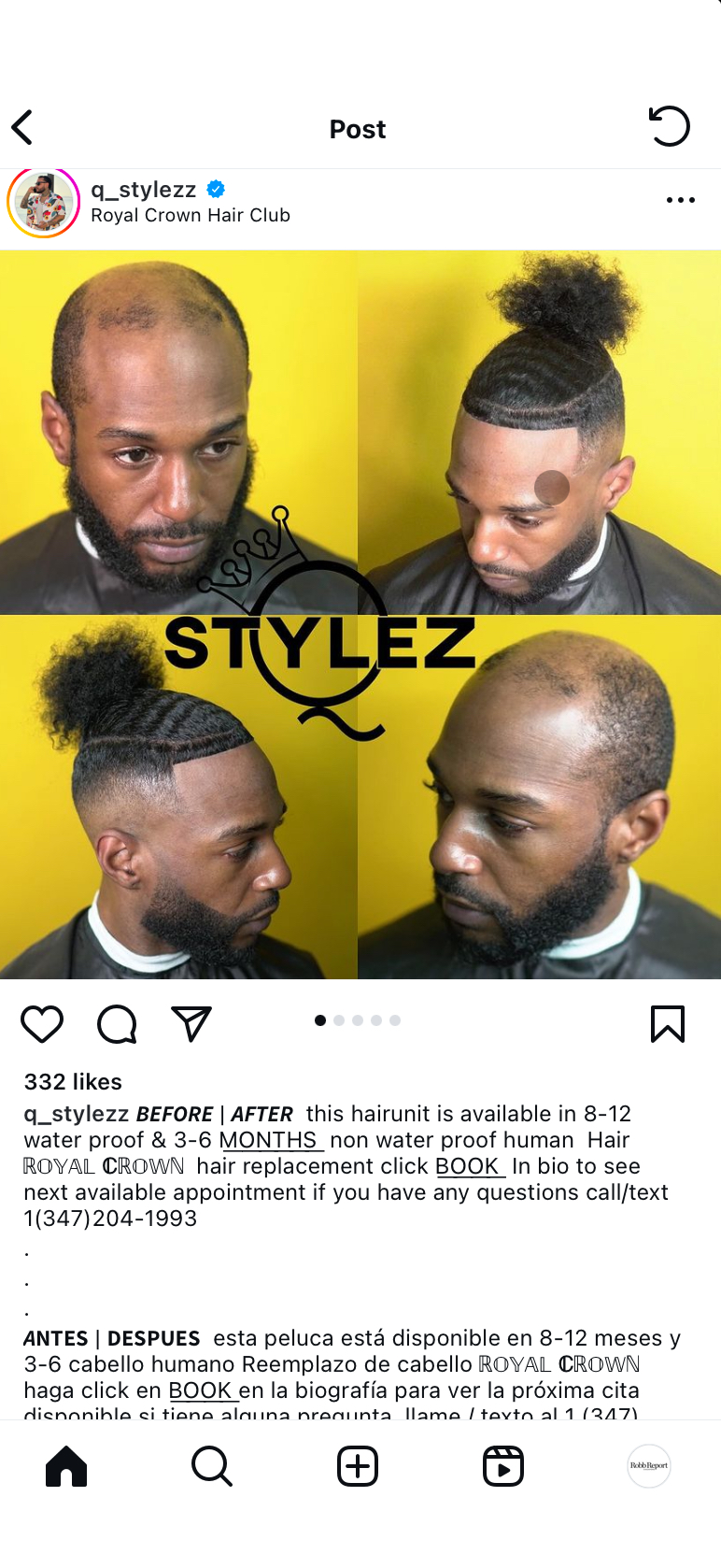
Kales, Galarza’s hairy godmother, says social media isn’t the only reason the systems have gotten so popular. There’s also something far more ancient, and Freudian, at play: No young person wants to look like their dad. “Somewhere in the early 1990s, shaving your head became a hairstyle,” she says. The generation entering its 20s now had fathers who often dealt with hair loss by simply shaving their scalps. In one sense, you can consider the shift to hair pieces as Gen Z’s move away from Gen X.
While guys in the ‘50s and ‘60s would measure their heads for a full-coverage, helmet-style wig, today’s toupee wearers are much more precise. Instead of covering up one’s entire head with a rug, barbers now aim to meld a hairpiece with the strands that remain, providing a more natural and seamless appearance. In that way, modern hair systems do more with less: Pieces are sized to a subject’s balding area, adhered with a special glue, and then styled with the existing hair. “We can now customize the hair system to where they’re really, really thin,” says Quinones. The potential for a perfect pate, and all that comes with it, is only as limited as a stylist’s skill set.
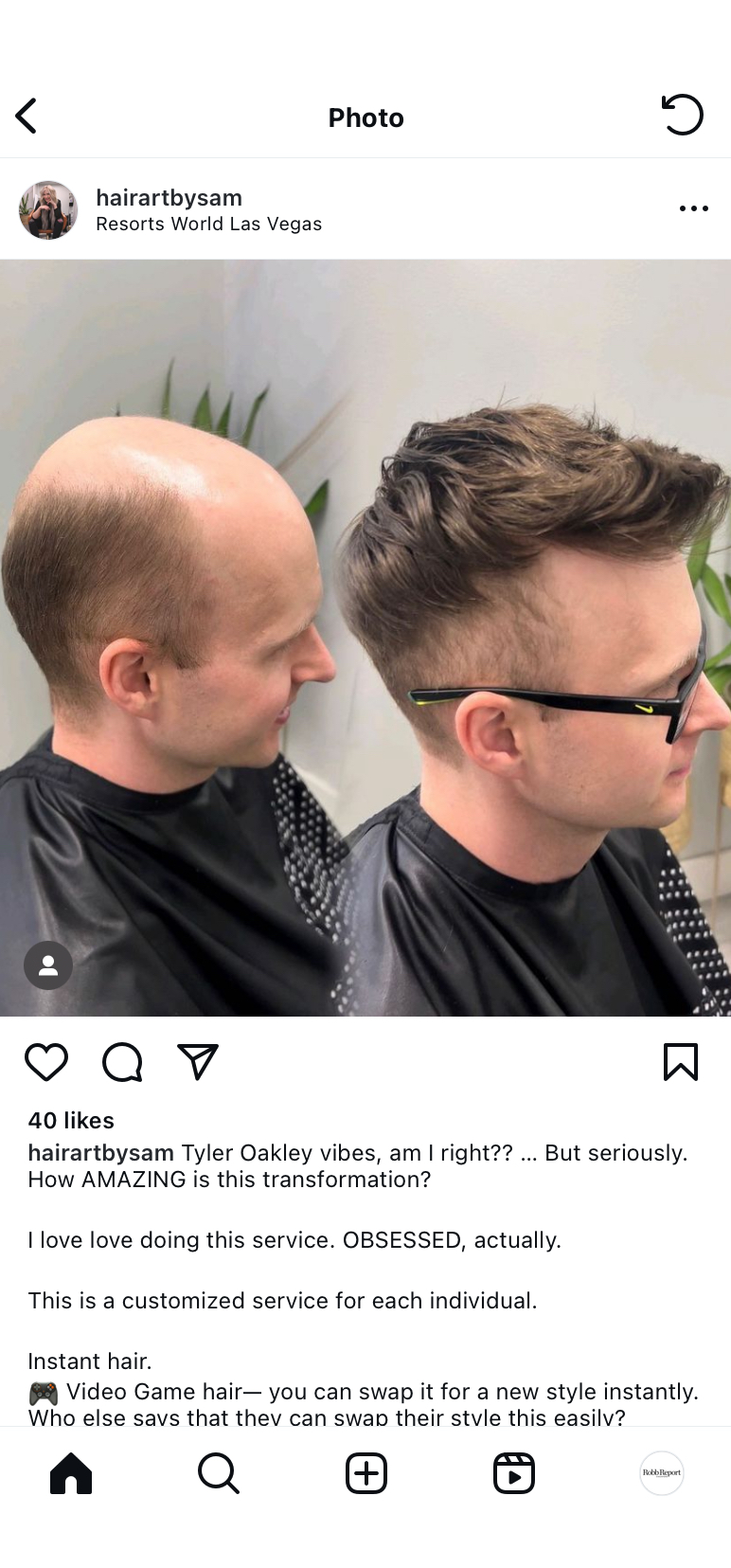
Part of what makes the new versions work is that they’re disposable. “You’re basically wearing a hair system for anywhere between four weeks to six months and then throwing it out and putting on a new one,” Kales says.
Pricing varies wildly depending on where you live, how skilled your barber is, and what your needs include. Kales charges US$875 for a Top Shoppe hair system (this includes fitting, “installation,” a haircut, and styling. Maintenance appointments, which you can schedule as often as you’d get a normal haircut, run US$195.) Quinones charges around US$500 for the piece and US$200 to install it.
At the higher end is NYC-based Terri Green, who mostly works with actors and rock stars to create hair additions that look so real a high-definition camera operator couldn’t tell the difference. She employs a team of five wigmakers who make each piece with untreated human hair, because Green doesn’t trust factory-made options. (“It doesn’t matter what the hair quality they start with in a factory; as soon as they dip it in that acid treatment, it looks like doll hair,” she says. “I’ve tried many, many factories. None of them will work with raw hair.”) Then she applies the systems with clips and micro beading—the same technique used to install hair extensions—and applies her five decades of styling experience in shaping a look. The costs of such perfection start at US$6,000 and can reach upward of US$15,000.
But if you’re going to spend the money, why wouldn’t you just get hair plugs? The surgical alternative can cost tens of thousands of dollars in this country, though there is a bustling plug tourism industry in Turkey, where the government typically subsidizes the operation to the tune of a few thousand.
@legohugs
“So few people are good candidates for transplants,” says Cheney, the aforementioned Toupee Queen, who operates a hair systems business from Salt Lake City and Newport Beach. There are other drawbacks: you need a strong donor area; your hair will still look very thin on top until it’s grown back to full strength; and it’s surgery. Cheney followed her mother into the business, who began doing hair systems because so many of her clients came to her unhappy with their transplant results.
“Of course, I’m talking to the people who are unhappy with their results,” Cheney says. “People who are happy aren’t coming in to talk to me.”
This may be the key. How we feel about ourselves often has less to do with what we have, than with the idea of what we can get. In our highly photographed digital world, a realm in which it’s never been more important to have a great head of hair, it should come as no surprise that there is power in the system.

